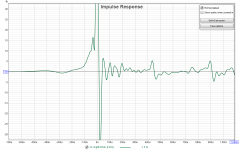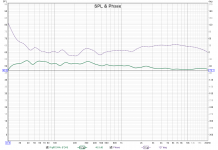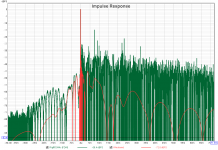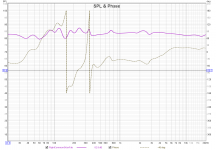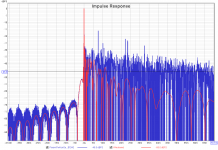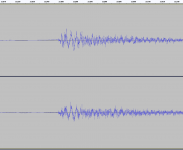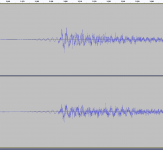I really like the loudness compensation, I’m trying it right now 🙂
Man this could come in useful... especially in a car....it’s almost exactly my curve I’ve created on one of my presets.
I imagine the sound power curve is different and more exaggerated the smaller the room gets ?
Man this could come in useful... especially in a car....it’s almost exactly my curve I’ve created on one of my presets.
I imagine the sound power curve is different and more exaggerated the smaller the room gets ?
That is an odd looking impulse, is that measured or a filter file?
This is one of the only things I have come across where the amount of pre-ringing is quantified
http://www.bodziosoftware.com.au/Pre_Post_Ringing_IR_And_Pulses.pdf
This is one of the only things I have come across where the amount of pre-ringing is quantified
http://www.bodziosoftware.com.au/Pre_Post_Ringing_IR_And_Pulses.pdf
Looks like impulse isn’t centered properly, and drivers have poor time alignment..
Hard to say without seeing more
I’m with fluid , I suspect the same
Hard to say without seeing more
I’m with fluid , I suspect the same
It is measured, 2,6 m from speaker.
SPL and step from same measurement are looking as below, FWD is 4 cycles.
On other impulse image is also step, but it is differently averaged/filtered by REW, I not find way to change it.
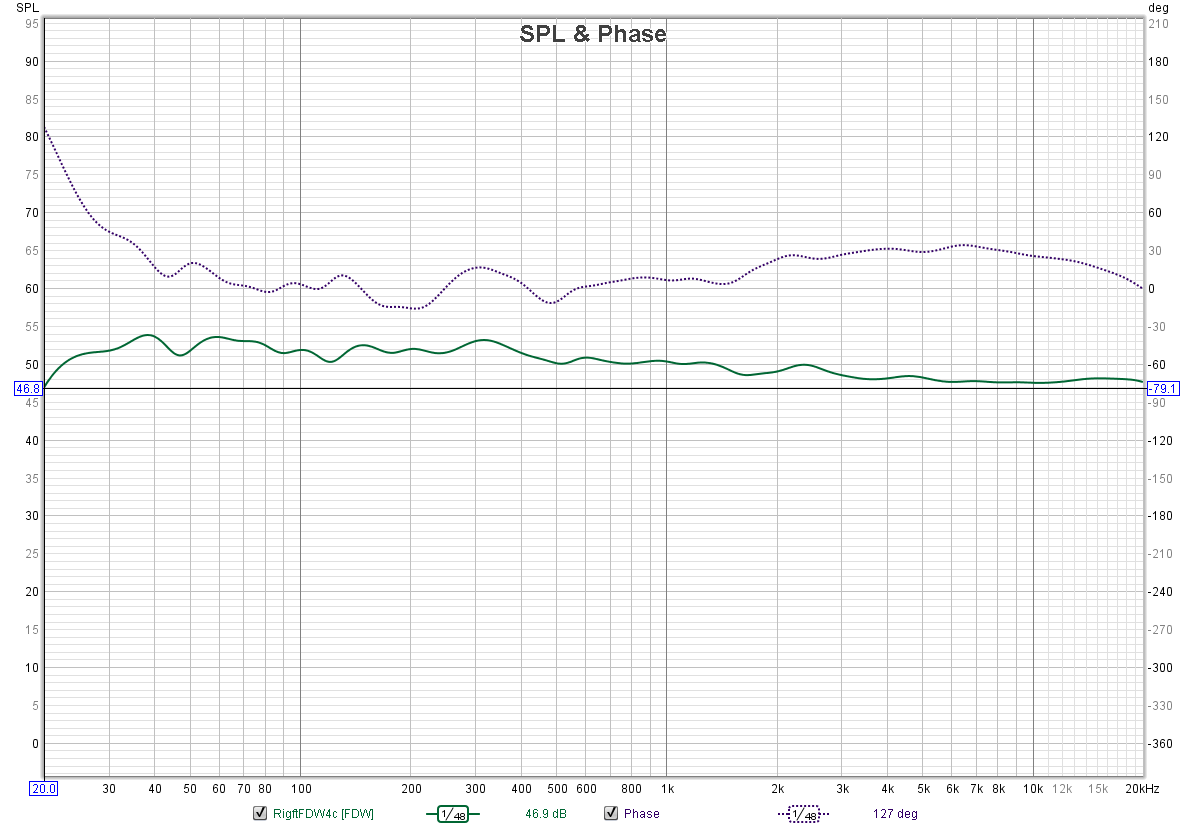
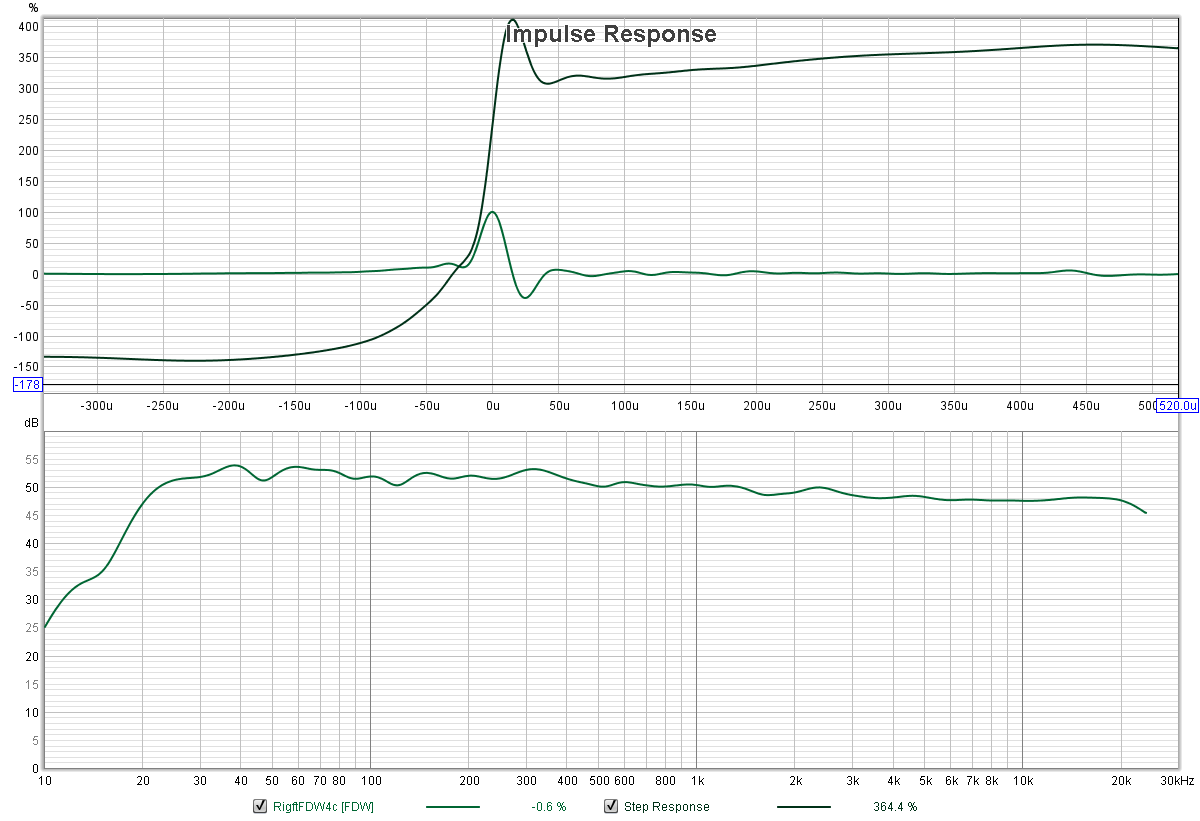
SPL and step from same measurement are looking as below, FWD is 4 cycles.
On other impulse image is also step, but it is differently averaged/filtered by REW, I not find way to change it.
Attachments
It is 3 way active OB.
Filter is containingin 2 steps, first FIR correction of general balance, minor room modes (both made with REW) and phase, then FIR filtering (all minimum phase low and high passes) to 3 way, small corrections in mid and tweeter and bigger room mode corrections in bass range.
First correction FIR impulse imported to REW looks this:
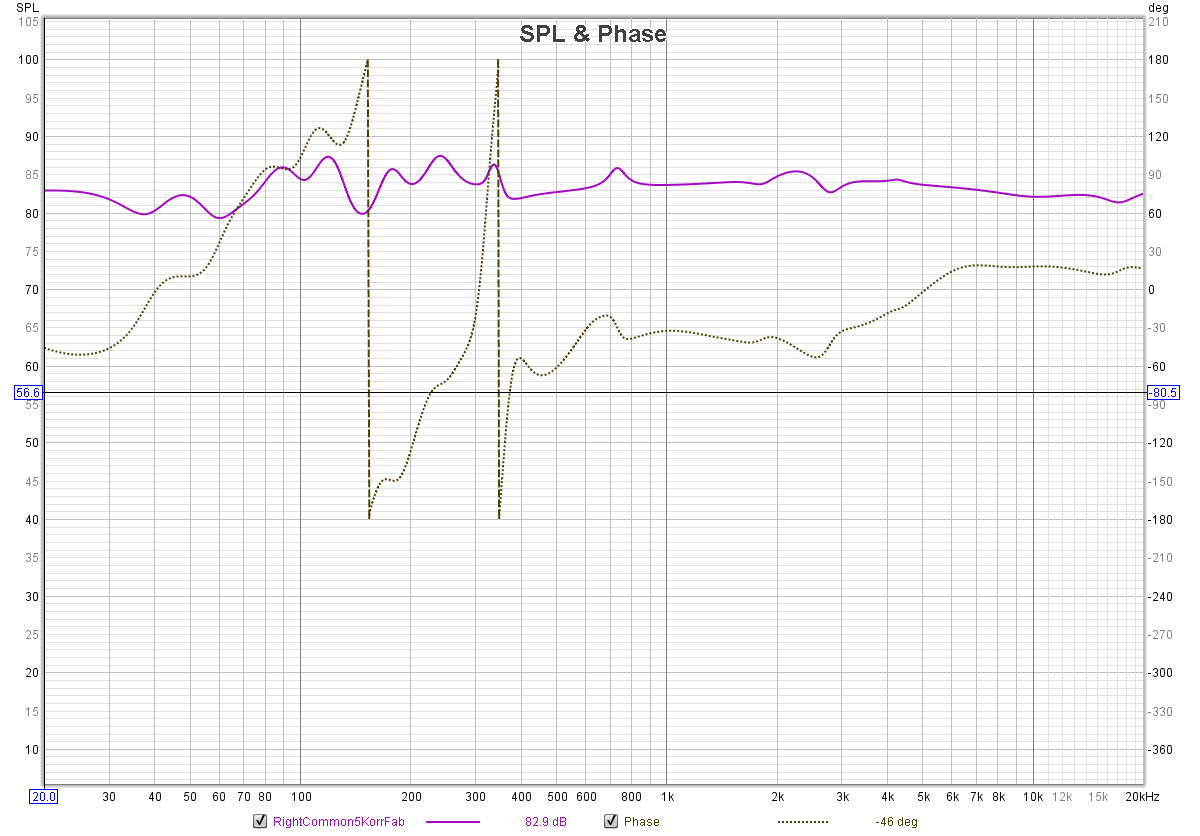
I also tested system without first general correction filter and I not noticed ringing.
Right channel impulse without this correction is with significantly less pre ringing.
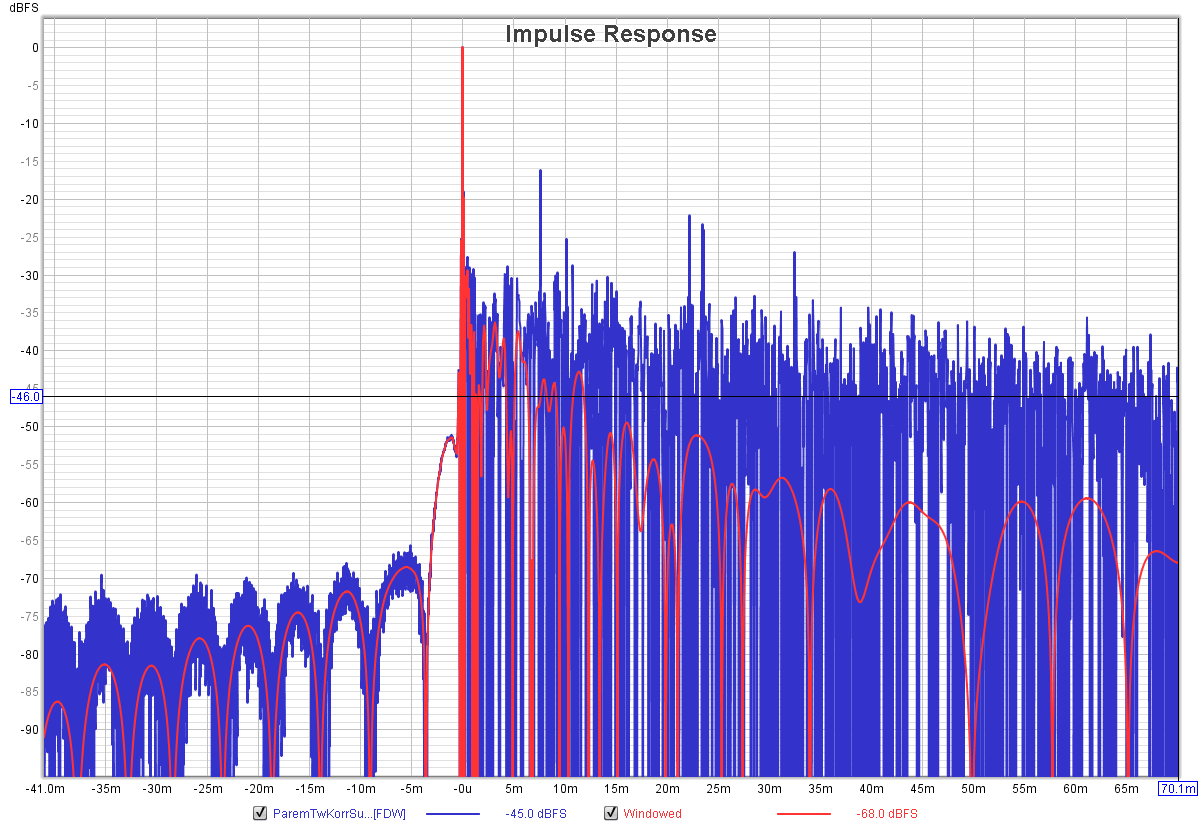
Filter is containingin 2 steps, first FIR correction of general balance, minor room modes (both made with REW) and phase, then FIR filtering (all minimum phase low and high passes) to 3 way, small corrections in mid and tweeter and bigger room mode corrections in bass range.
First correction FIR impulse imported to REW looks this:
I also tested system without first general correction filter and I not noticed ringing.
Right channel impulse without this correction is with significantly less pre ringing.
Attachments
Last edited:
I also recorded with stereo microphone, from usual listening position, part of drum solo where ringing was most obvious. On recording (if listening with headphones) it is not so obvious as directly from speakers. Probably also left and right speaker summary in real room had some influence.I uploaded also mp3 file of recording, first part is with correction FIR.
Images from recording, first without correction FIR, from exactly same part, same amplitude and time scaling.
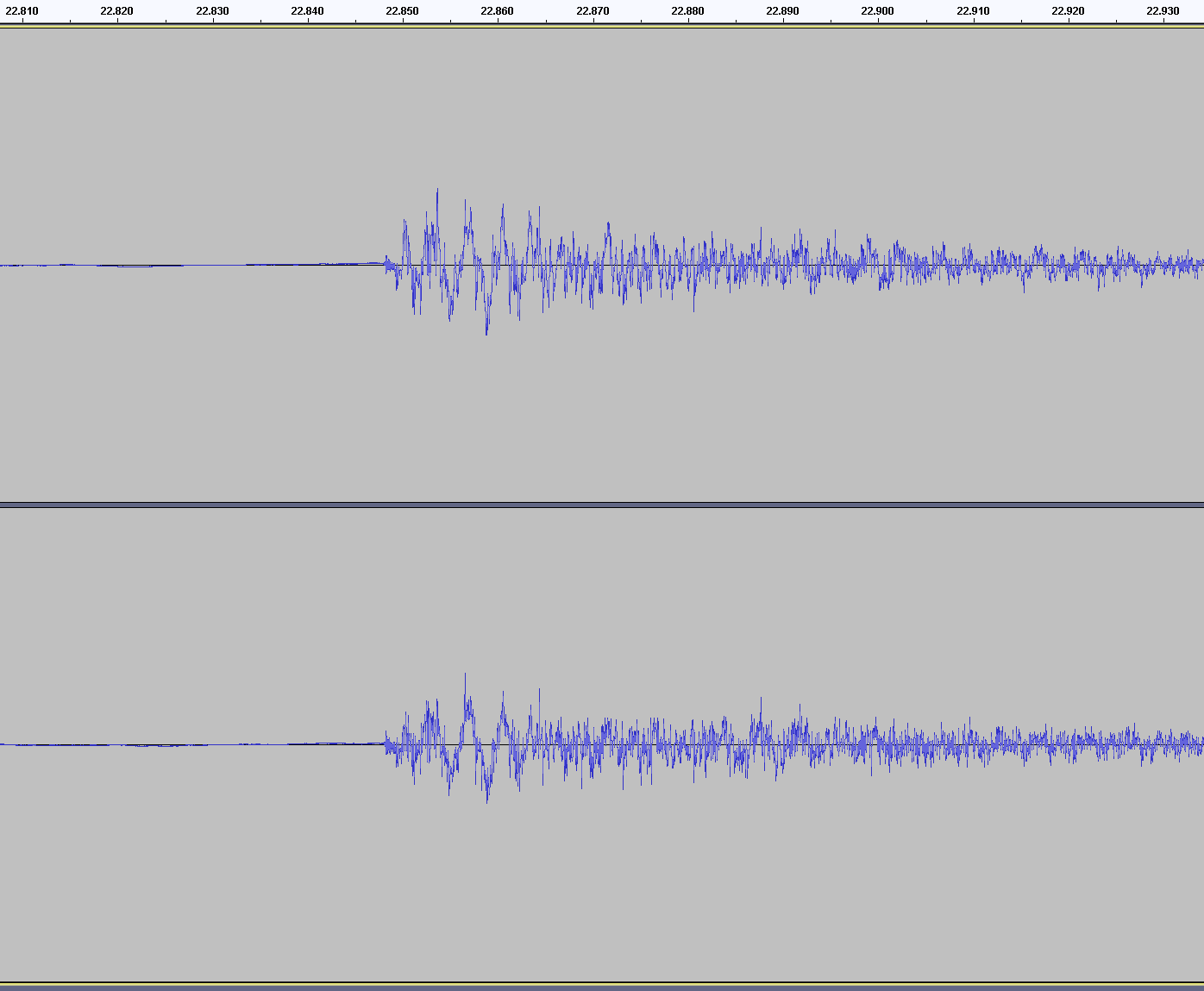
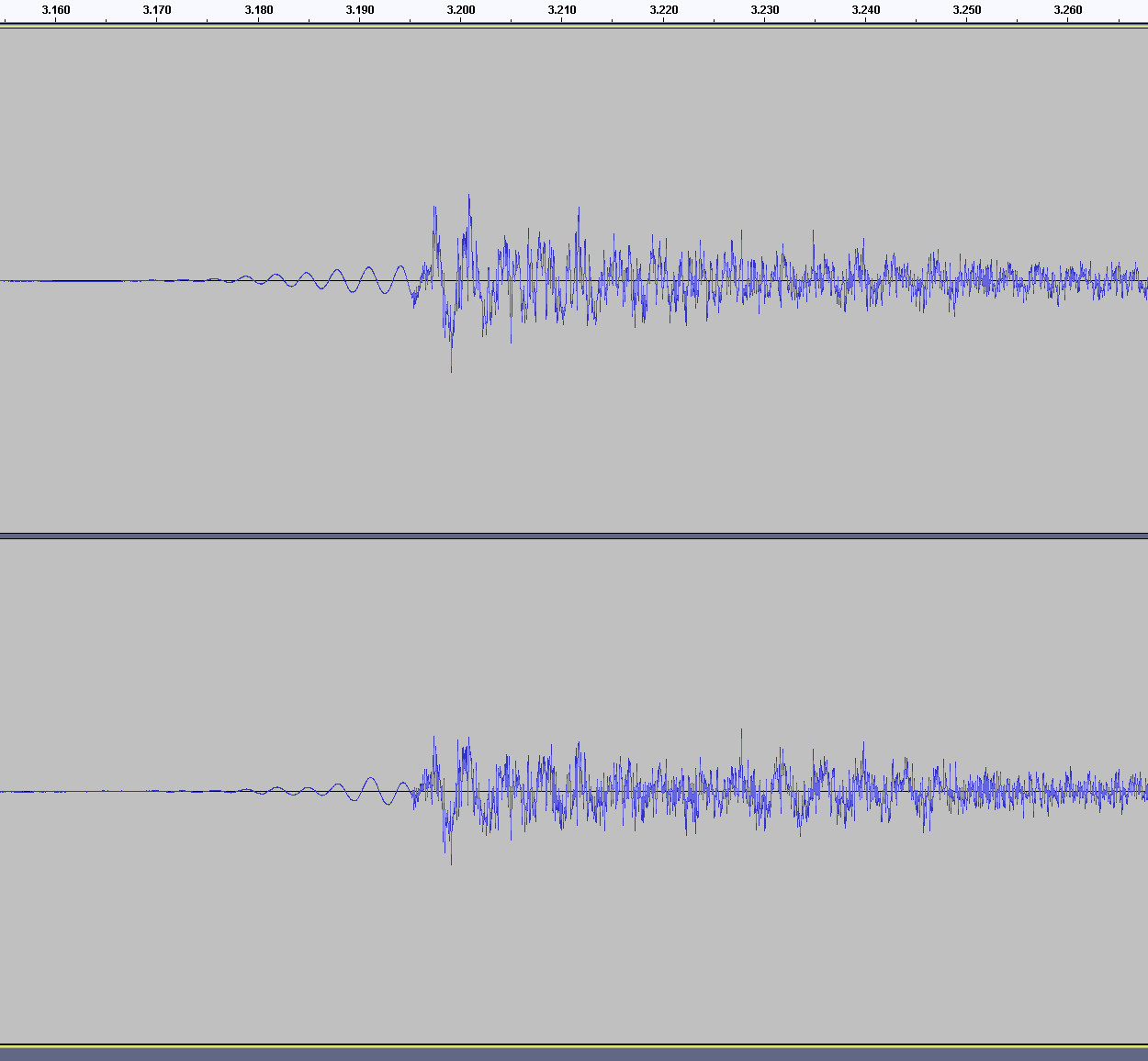
Images from recording, first without correction FIR, from exactly same part, same amplitude and time scaling.
Attachments
Last edited:
I noticed your zoomed in to nanoseconds....
Like 20ish nanoseconds between those peaks , that’s not a lot, I would be worried if it was millisecond ....
Someone else should answer this , it could be different dac clocks or sample issues I mean time of processing between amps even .... I honestly don’t have a good answer for you.....
Sorry I just saw that..... I see your crossovers , that part looks good actually.... hummm
Maybe more then I understand atm .
Like 20ish nanoseconds between those peaks , that’s not a lot, I would be worried if it was millisecond ....
Someone else should answer this , it could be different dac clocks or sample issues I mean time of processing between amps even .... I honestly don’t have a good answer for you.....
Sorry I just saw that..... I see your crossovers , that part looks good actually.... hummm
Maybe more then I understand atm .
Hi kaameelis,
always helps to know exactly what we are looking at...
So, you're using a 3-way, right?
And what are the xover freqs, types, and orders?
Looks like maybe LR4's at about 150 and 350Hz ?
Are you using FIR to correct everything across the input, with xover's in place?
Or exactly what?
The impulse in #3282 looks like a mid driver is leading the higher driver...
but in #3285 it looks much smoother; is #3282 due to FDW, or gating, or some other type smoothing?
(If so, I really advice against FDW and/or gating if at all possible...usually overdone and dumbs down the data way too much...stick with modest smoothing is best bet , ime)
always helps to know exactly what we are looking at...
So, you're using a 3-way, right?
And what are the xover freqs, types, and orders?
Looks like maybe LR4's at about 150 and 350Hz ?
Are you using FIR to correct everything across the input, with xover's in place?
Or exactly what?
The impulse in #3282 looks like a mid driver is leading the higher driver...
but in #3285 it looks much smoother; is #3282 due to FDW, or gating, or some other type smoothing?
(If so, I really advice against FDW and/or gating if at all possible...usually overdone and dumbs down the data way too much...stick with modest smoothing is best bet , ime)
He’s using fir but minimum phase crossovers, (why he’s not using linear crossover get me but I’m not him 😕
I saw the same thing on the crossovers.....
But you nailed it! I didn’t see that but now I do.... your right .....
(Sorry as y’all were I’ll be quiet for a few posts to see how this progresses)
I saw the same thing on the crossovers.....
But you nailed it! I didn’t see that but now I do.... your right .....
(Sorry as y’all were I’ll be quiet for a few posts to see how this progresses)
Hi kaameelis,
always helps to know exactly what we are looking at...
So, you're using a 3-way, right?
And what are the xover freqs, types, and orders?
Looks like maybe LR4's at about 150 and 350Hz ?
Are you using FIR to correct everything across the input, with xover's in place?
Or exactly what?
The impulse in #3282 looks like a mid driver is leading the higher driver...
but in #3285 it looks much smoother; is #3282 due to FDW, or gating, or some other type smoothing?
(If so, I really advice against FDW and/or gating if at all possible...usually overdone and dumbs down the data way too much...stick with modest smoothing is best bet , ime)
I am looking direct phase, direct SPL without audible pre and post ringing.
I had LR6 at 210 Hz and LR4 at 2700 Hz electrical filters defined manually in rePhase, as I had OB so acoustically 210Hz filter is more like LR8 on 210 Hz and 2700 filter like LR6.
Actually I had not problems on filter as I had same speakers before (and also now if needed) with DSP based IIR filters and I had tuning the filters long time.
I get audible artifacts after adding correction made base on house curve on REW and manual phase correction, they are in same rePhase FIR.
REW had different gating/filtering on different Impulse views, I actually did not know the difference.
#3282 and #3285 are same measurements with FDW 4 cycles. #3282 is from Overaly/Impuse, #3285 is direct Impulse view.
I made also version with linear phase filters but it was not possible to get summary SPL phase direct. With minimum phase filters rePhase filter linearization works well, only minor manual adjustment was needed.He’s using fir but minimum phase crossovers, (why he’s not using linear crossover get me but I’m not him 😕
I added to recording file also 3 part what is from original CD, as original is normalized to 0dB, I added also 6.5 dB to recorded part to get approximately same level.
Attachments
Noob question.....cancellation due to a minimum phase crossover....cannot be undone, upstream with FIR correction on the stereo buss?
lol no idea, its just some advice given to me...I said that I had plans of running minimum phase at the XO and fixing things using FIR on the stereo buss using Equalizer APO....
They suggested that I needed FIR at every XO because I would not be able to fix any cancellations that might occur from minimum phase....
They suggested that I needed FIR at every XO because I would not be able to fix any cancellations that might occur from minimum phase....
Those are two separate things rolled into one.
You can undo the phase warping of Linkwitz Riley filters by using filters linearization in rephase as long as the frequency and acoustic crossover match an electrical equivalent. That can be applied as a stereo convolution filter. The warping can be fixed for any crossover shape and type but doing it is then not so simple but still can be applied in stereo.
It is possible that there could be an issue/cancellation created between individual drivers and without access to the drivers at the crossover inputs it would be impossible to correct afterwards. That just suggests a bad crossover or poor implementation.
You can undo the phase warping of Linkwitz Riley filters by using filters linearization in rephase as long as the frequency and acoustic crossover match an electrical equivalent. That can be applied as a stereo convolution filter. The warping can be fixed for any crossover shape and type but doing it is then not so simple but still can be applied in stereo.
It is possible that there could be an issue/cancellation created between individual drivers and without access to the drivers at the crossover inputs it would be impossible to correct afterwards. That just suggests a bad crossover or poor implementation.
In other words.....the better performing the IIR filters at XO.....the less work involved fixing things from a stereo buss perspective....
Hypex amps don't have FIR so I was thinking of switching to those (these crown amps dsp is nice but highly over wattage and fans running) plus hypex has digital ins.....and the
RME ADI-2 DAC FS Da Converter has digital outs.... figured I'd use Equalizer APO for the FIR part..... sounds like a win to me.
Hypex amps don't have FIR so I was thinking of switching to those (these crown amps dsp is nice but highly over wattage and fans running) plus hypex has digital ins.....and the
RME ADI-2 DAC FS Da Converter has digital outs.... figured I'd use Equalizer APO for the FIR part..... sounds like a win to me.
That depends on what you mean by fixing. Rephase has built in selections for Linkwitz Riley filters to allow the phase shift of those to be undone so that can be simple. What matters is the acoustic slope of the crossover, so the closer you can get it to a true LR then the better the rephase correction will work without any further intervention.In other words.....the better performing the IIR filters at XO.....the less work involved fixing things from a stereo buss perspective....
In general making a good crossover that does not require fixing should be the goal, confining the "fixing" to removing the phase shift if desired.
Why use such an expensive DAC and only use the digital output of it?Hypex amps don't have FIR so I was thinking of switching to those (these crown amps dsp is nice but highly over wattage and fans running) plus hypex has digital ins.....and the
RME ADI-2 DAC FS Da Converter has digital outs.... figured I'd use Equalizer APO for the FIR part..... sounds like a win to me.
Noob question.....cancellation due to a minimum phase crossover....cannot be undone, upstream with FIR correction on the stereo buss?
lol no idea, its just some advice given to me...I said that I had plans of running minimum phase at the XO and fixing things using FIR on the stereo buss using Equalizer APO....
They suggested that I needed FIR at every XO because I would not be able to fix any cancellations that might occur from minimum phase....
Only thing I can think of is what I measured many times myself ....
When I had minimum phase crossovers on drivers mounted on the same plane and axis they summed “textbook LR” and I could use an fir on the sum ...
When the drivers are mounted on different axis’s the phase shift combined with the twist caused by crossovers caused comb filtering (or cancellations) at certain intervals , and it was dependent on frequency vs. axis ....
An fir at each output making all drivers that are mounted at different axis’s behave automatically like they were all on the same axis. Vs where before a minimum phase crossover was a total mess and the sum could only be addressed at one point in space , and the response was radically different even at lengths of just a few inches.
The on and off axis behavior of the driver per say didn’t change but the time differences of those drivers against the axis’s did change and were completely uniform..using linear phase (weather linearization or linear phase ,,, but at each output for the crossover) .. it’s was an absolute fix all got that requirement....
For me doing car audio, rephase crossovers are a miracle.....
Last edited:
- Home
- Design & Build
- Software Tools
- rePhase, a loudspeaker phase linearization, EQ and FIR filtering tool
